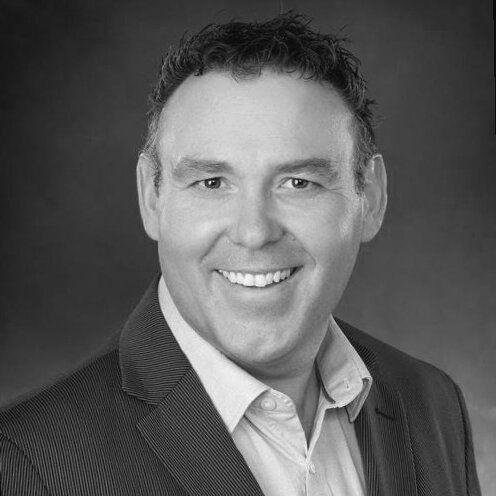Leading The Way On Curbing Peak Energy
In time, the smart grid will give us the ability to increasingly and seamlessly shave the peak so our customers don’t have to. And they won’t even notice.
By Carl Ozkaynak, December 7, 2021
As the chill of winter closes in on all of us, Saint John Energy is doing all we can to smooth out the high peaks of energy demand. Peak demand is very costly – for us, for our customers and for the environment.
Last winter, we enlisted our customers in the effort to “Shave the Peak” for the very first time. As a cold snap descended on the city in March, we sent out our very first public peak alert – asking customers to do all they could to cut back on their energy use for a few hours.
Saint John responded, making it a great success for a trial effort. Indeed, the shave the peak initiative was so successful that it attracted national acclaim last month – winning a sustainability award from the Canadian Electricity Association that credited us for “outstanding leadership.”
We’re grateful to be recognized, in part because we have been working for years to bring in innovative ways to curb peak demand – a critical focus of our business, the advanced smart grid we’re building for Saint John and our vision for the Utility of the Future.
The credit also belongs to the people of Saint John, who responded by the thousands to our appeal last March, taking all sorts of steps to lower their energy usage – notching down the thermostat, putting off the laundry, waiting to turn on the stove and so on.
Like predicting the weather
Predicting a peak demand event is much like predicting the weather – a lot of data and analysis goes into it but it remains an inexact science.
Predictions have become even more challenging with the advent of the COVID pandemic. Suddenly, historic energy usage patterns are of little use as people work from home instead of the office and students can suddenly be learning from home on any given day. It is a new reality that energy use in Saint John can be affected by events happening here or around the globe.
“On the coldest day of the year, we can end up paying more than $3 million in peak demand charges. This is a big incentive to lower the peak.”
We forecast and plan for peak events a month out. Like the weather, though, the forecasts are always changing in the days and hours ahead of an event.
On the morning of Nov. 30, we issued our first public peak alert of the fall. We had hit a peak the day before, and it looked as though we would establish a new – and more expensive – peak that morning.
We issued the alert and adopted a key strategy in battling the peak – dialling down the voltage on our system in a way customers would never notice but which notably curbs demand. Thanks to the voltage reduction and the customer response, we were able to beat the peak entirely.
Customer success and engagement has always been a tremendous focus for us, and that pays off when we ask for help. Any Saint John Energy customer who would like to join us in flattening peak energy and receive these alerts can sign up through our customer portal.
Electricity demand in Saint John in summer usually peaks out around 100 megawatts – by winter, it can hit 220 megawatts. This is not at all surprising when you consider that most customers use electricity to heat their hot water and some 70 per cent of homes in the city are heated with electricity.
Peak demand costs millions
Close to one-third of the money Saint John Energy spends on buying electricity from NB Power, our wholesale supplier, goes toward paying peak energy charges. Over a year like last year, that meant that almost $30 million of a $100 million energy purchasing budget went just to cover those charges.
“Our efforts are paying off. In 2016, we were able to save nearly $550,000 in peak demand charges which climbed to nearly $860,000 last year.”
We incur those special charges every month. But they are tied to our highest energy demand sustained over at least 15 minutes within that month.
On the coldest day of the year, we can end up paying more than $3 million in peak demand charges. This is a big incentive to lower the peak – the lower the peak, the less we have to pay.
The good news is that the efforts we have been making over the past several years are paying off – in 2016, we were able to save nearly $550,000 in peak demand charges and by last year that had climbed to nearly $860,000.
Reducing peak curbs carbon emissions
In New Brunswick, satisfying peak energy can double carbon emissions as generating plants run on fossil fuels are often relied on to meet the surge of demand.
“For the last several years, we’ve been building one of the most advanced smart grid systems in Canada – a smart grid that is integral to attacking peak demand.”
Publicly available data from NB Power shows that nearly a half a tonne of carbon emissions are avoided for every megawatt saved at peak.
The day we issued that very first public peak alert last March, the collective effort of Saint Johners and the work we did behind the scenes on attacking the peak shaved more than 14 megawatts off the peak and saved more than $200,000 in peak demand charges.
For the last several years, we’ve been building one of the most advanced smart grid systems in Canada – a smart grid that is integral to attacking peak demand.
The advent of the smart grid allows for better forecasting of pending weather events and the ability to correlate that with historical energy use patterns, meaning that our system operators have better information to act on when managing energy flow.
A smart grid to better manage peak
System operators also have more resources to shift demand to avoid or soften the peak.
“As we continue to build out our smart grid, we will have thousands of these resources deployed across the city, most in customers’ homes.”
These resources include our Tesla Megapack, which we can use to store energy in off-peak times for deployment during peak, and large-scale generators. As I mentioned earlier, we can also make a significant dent in demand by temporarily reducing the voltage on our system.
As we continue to build out our smart grid, we will have thousands of these resources deployed across the city, most in customers’ homes. Smart water heaters and smart heat pumps will allow us not only to better manage energy demand but also to store energy for use at peak times.
In time, the smart grid will give us the ability to increasingly and seamlessly shave the peak so our customers don’t have to. And they won’t even notice.
To join the effort to shave the peak, sign up for alerts through the Saint John Energy customer portal.
Carl Ozkaynak is the Director of Smart Grid at Saint John Energy and is responsible for Grid Modernization, Information and Operational Technology, Digital Transformation, and Digital Delivery. Carl has years of extensive experience and has spent his career delivering Smart Grid and Digital Transformation Projects across North America.


